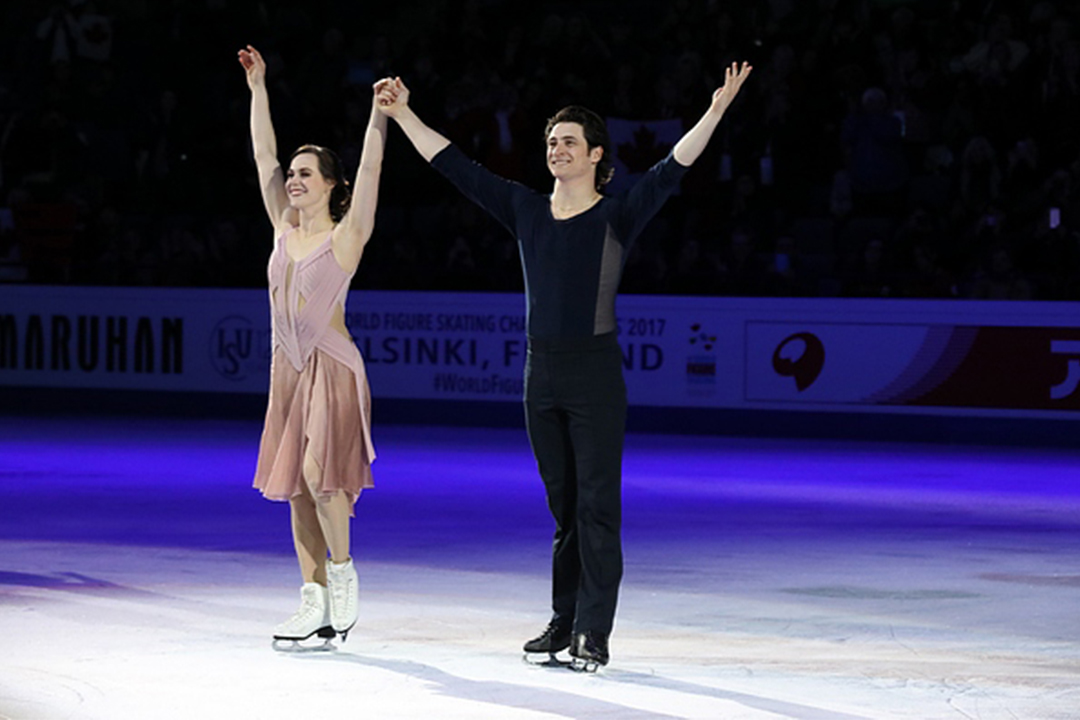Quick disclaimer: I am no skating expert. Did cheesy movies like Go Figure, The Mighty Ducks, and Ice Princess introduce me to the basics of ice skating? Yes. Am I a great ice skater? Not really, though one can dream. Yet, I find ice dancing to be one of the most beautiful and captivating sports ever created, and with the 2022 Winter Olympics, I thought I would be closely watching it again — as it turns out, I did not.
As an average viewer of the Winter Olympics with little experience playing the sports involved, I watch the competitions and base my opinions on what I find technically impressive on an assumed scale of difficulty and the overall appeal of the performance. However, my favourite event is figure skating, which I believe to be about more than technical merit and achieving the best scores. I owe that to Canada’s retired ice dance duo, Tessa Virtue and Scott Moir.
The pair have been skating partners since 1998, performing on the ice for 22 years before retiring in 2019. They significantly impacted the rink, especially following their debut at the 2010 Winter Olympics in Vancouver.
I recently revisited my favourite of their debut performances at the 2010 games, the Free Dance, where a duo gets to skate to a song and tempo of their choice. It was more captivating when I first watched it. Tessa and Scott perform with such grace that it makes it feel like they are not on the ice at all — instead, they’re floating midair, caught up in a whirlwind of each other. Their costumes, white and sparkly as the ice beneath them, evoke an angelic visual that sets a light atmosphere. In conjunction with their dancing style, a combination of spins and lifts, the routine comes together to create a mesmerizing and magical story. Yet the most enchanting element of their performances is their unmatched chemistry.
Romance is a vital aspect of the duo’s performances. From their performances in 2010 to the ground-breaking Free Program from Pyeongchang 2018 performed to “Moulin Rouge,” Tessa and Scott present various forms of romance through their facial expressions and body language.
Tessa and Scott are excellent actors. Based on the type of romance, music, and storyline, the pair know how to move between emotions and expressions with ease. It is a subtle way to pull the viewers into the duo’s intimate and comfortable relationship.
On the other hand, the pair have a strong personal relationship that merges well into their professional lives. Both skaters are extremely close to each other throughout their performances, without hesitation or fumbling. In my opinion, it alludes to a familiarity that few skating pairs express. In their dynamic performances, the pair have a strong balance of liveliness and aggression while being immensely controlled in their movements and with each other.
Aside from landing their skillful skate maneuvers, Tessa and Scott are rarely apart and often transfixed on each other, executing a convincing story about passionate romance. Their ethereal performances portray innocent and fragile forms of love through beauty and trust, like their Free Dance in 2010 and Free Program from Sochi 2014.
In the 2014 Free Program, the duo used their space differently by gliding with poise and ease, yet extending for each other. Their synchronicity is almost perfect, as if their souls stem from the same place. At their speed, it looks like the wind is rushing at them, and their furrowed brows, parted lips, and desiring stares are that love story from your favourite movie coming to life. Their characters have entire personalities and a relationship that radiates love — Scott does a beautiful job showing this through his dexterity and delicacy when lifting and holding Tessa, who displays equal faith in her partner.
The strength of their relationship is in the little moments and details, which come together into a cohesive work of art. Often, I feel like they revel in the moment, embracing each other’s artistry before bowing to the audience with joy. It makes it feel like we are merely voyeurs of the sport and their relationship. At times, they look so in love that it is hard to believe they have never been involved romantically outside their careers.
At the core of it all, the pair are storytellers. The execution of their artistry and recurring chemistry makes them stand out among the competition. In addition, the pair brought something new and fascinating to ice dance that flourishes from their platonic relationship. I suppose it is why Tessa and Scott were the youngest pair to win gold at their debut Olympics and later became the most decorated skaters in Olympic history.
So why am I not watching the Olympics closely this year? Well, because there is no Tessa Virtue and Scott Moir anymore. As I applaud the newer generations of ice dancers who possess skills and talent that few share, I miss watching a story unfold with flawless execution and a remarkable story that makes me believe in magic or soulmates. It would be unfair for me to unintentionally compare the craft of current athletes from Beijing 2022 with Virtue and Moir because I know they will not speak to me as the Canadian duo has for years.
For now, I will be rewatching highlights of their performances and hoping that someday there will be ice dancers whose performances leave me in awe like Virtue and Moir did — or that they come back from retirement again. One can dream.
Disclosure: Simran Randhawa is currently a member of The Varsity’s Board of Directors.


